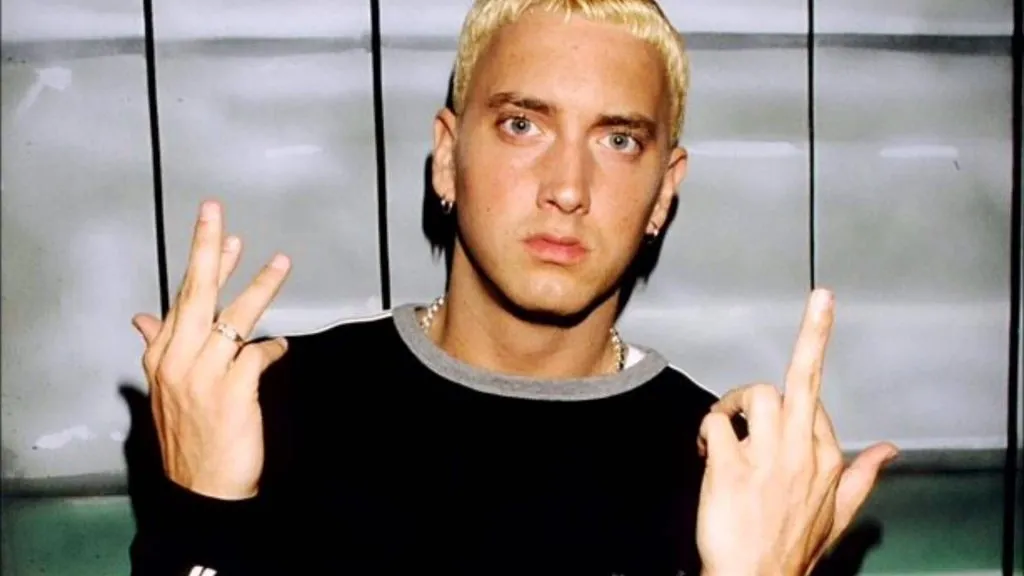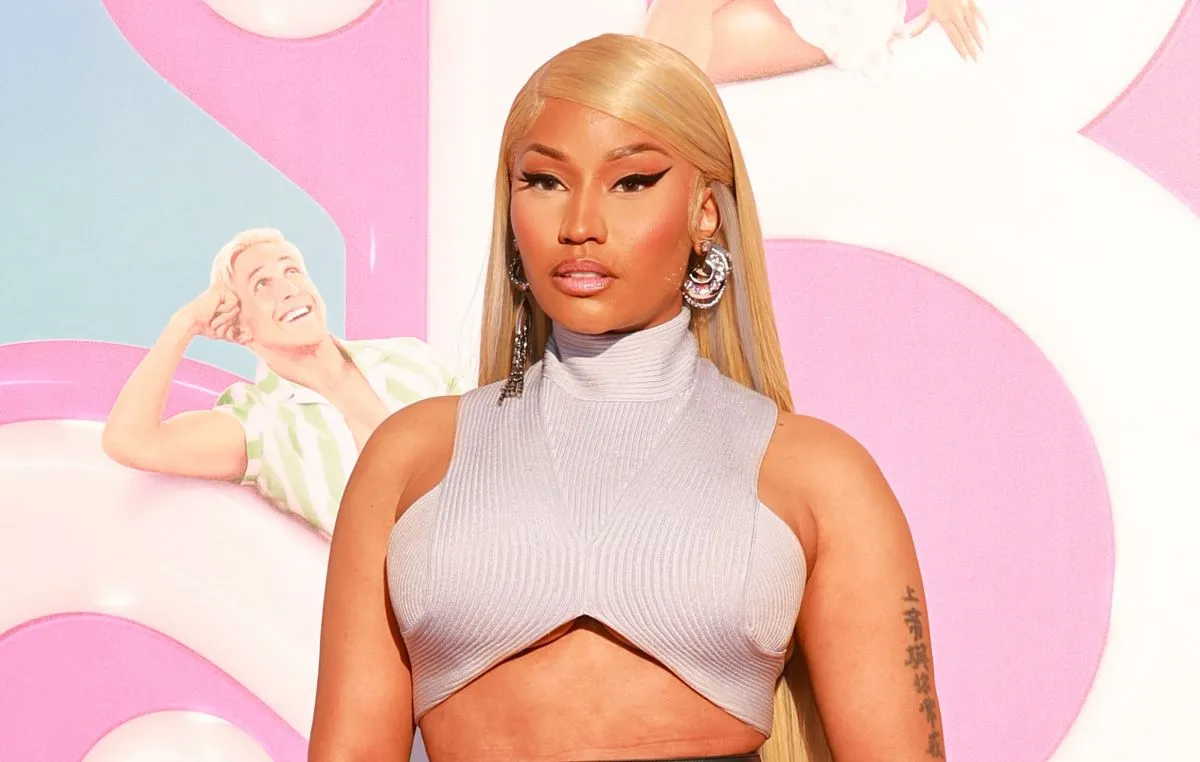

Eminem Unveiled: The Provocative Rise of a Rap Legend Through His Twisted Alter Egos
Eminem, born Marshall Bruce Mathers III on October 17, 1972, in St. Joseph, Missouri, is a name that resonates across the globe. Renowned for his intricate lyrics, rapid-fire delivery, and unfiltered storytelling, Eminem has cemented his place as one of the most influential figures in hip-hop history. Central to his artistic expression are the various personas he has adopted throughout his career, each offering a unique lens into his psyche and experiences. This article delves into the evolution of Eminem through his notable alter egos: Slim Shady, Marshall Mathers, and B-Rabbit.
Early Life and the Genesis of Eminem
Marshall Bruce Mathers III’s journey began in challenging circumstances. Raised by his mother, Debbie Nelson, after his father abandoned the family when Eminem was just 18 months old, he faced a tumultuous childhood marked by frequent relocations between Missouri and Detroit. These early experiences of instability and hardship deeply influenced his later work, providing raw material for his emotionally charged lyrics. Despite dropping out of high school at 17, Eminem found solace and purpose in music, immersing himself in Detroit’s underground rap scene. His relentless participation in local rap battles honed his skills and gradually earned him recognition.
The Birth of Slim Shady
In the mid-1990s, amidst personal and professional struggles, Eminem introduced the world to his most infamous alter ego: Slim Shady. This persona emerged as a response to the frustrations and rejections he faced in the music industry. Slim Shady embodied Eminem’s darker, more violent fantasies, allowing him to express themes that were otherwise taboo. The 1997 release of The Slim Shady EP marked the debut of this character, featuring tracks filled with provocative and explicit content that challenged societal norms.

Slim Shady’s influence was further solidified with the release of The Slim Shady LP in 1999. The album’s lead single, “My Name Is,” showcased the persona’s satirical and rebellious nature, propelling Eminem into the mainstream spotlight. This alter ego allowed Eminem to push boundaries, using shock value and dark humor to captivate and, at times, unsettle his audience.
Marshall Mathers: The Man Behind the Curtain
While Slim Shady represented unbridled chaos and controversy, Marshall Mathers offered a glimpse into the artist’s authentic self. This persona delved into Eminem’s personal experiences, addressing his struggles with family, relationships, and inner demons. The 2000 release of The Marshall Mathers LP provided a raw and introspective look into his life, with tracks like “Stan” and “The Way I Am” exploring themes of fame, obsession, and personal identity.
Eminem himself has articulated the distinctions between his personas, stating, “Slim Shady is the name for my temper or anger. Eminem is just the rapper, Slim Shady is the attitude behind him, and Marshall Mathers is who I am at the end of the day.” This candid acknowledgment underscores the complexity of his character and the multifaceted nature of his artistry.

B-Rabbit: Art Imitating Life
The 2002 film 8 Mile introduced audiences to Jimmy “B-Rabbit” Smith Jr., a character closely mirroring Eminem’s own life. Set against the backdrop of Detroit’s gritty rap battle scene, the film chronicles B-Rabbit’s journey as he strives to overcome personal and professional obstacles to achieve success as a rapper. This semi-autobiographical portrayal resonated with fans and critics alike, showcasing Eminem’s acting prowess and providing deeper insight into his formative years.
The film’s anthem, “Lose Yourself,” encapsulates the essence of seizing opportunity amidst adversity. The track’s universal message and compelling delivery earned Eminem an Academy Award for Best Original Song, solidifying his status as a multifaceted artist capable of transcending mediums.

Eminem’s Evolution and Cultural Impact
Throughout his career, Eminem has continually evolved, navigating the complexities of fame, personal turmoil, and artistic growth. His 2002 album, The Eminem Show, balanced commercial appeal with deep, introspective content, addressing issues such as his tumultuous relationship with his mother and the challenges of fatherhood. Tracks like “Cleanin’ Out My Closet” and “Hailie’s Song” offered listeners an unfiltered look into his personal life, further blurring the lines between his public persona and private struggles.
In subsequent years, Eminem faced and overcame significant challenges, including battles with addiction and the pressures of maintaining relevance in an ever-changing industry. His resilience culminated in the release of albums like Relapse (2009) and Recovery (2010), which chronicled his journey through rehabilitation and self-discovery. These works not only showcased his enduring talent but also highlighted his commitment to personal growth and transformation.
Eminem’s influence extends beyond music. His fearless exploration of controversial topics and willingness to confront societal issues have sparked conversations about censorship, freedom of expression, and the role of art in reflecting societal realities. Despite facing criticism for his provocative lyrics, Eminem has remained unapologetically authentic, challenging listeners to confront uncomfortable truths and question societal norms.
Recent Developments and Legacy
In recent years, Eminem has continued to make headlines, both for his artistic endeavors and personal milestones. In 2024, Eminem released his twelfth studio album, The Death of Slim Shady (Coup de Grâce), a conceptual project that symbolically concludes the narrative of his infamous alter ego, Slim Shady. The album explores themes of self-confrontation and transformation, featuring collaborations with artists such as White Gold, Sly Pyper, JID, Dem Jointz, Ez Mil, Skylar Grey, Big Sean, BabyTron, and Jelly Roll. Production credits include longtime collaborators Dr. Dre and Mr. Porter, alongside Dem Jointz, Fredwreck, Cubeatz, and Cole Bennett.
The Death of Slim Shady received mixed reviews from critics. While Eminem’s technical abilities and production quality were praised, some critics took issue with the album’s lyrical content, describing it as lacking inspiration. Despite this, the album debuted at number one on the Billboard 200, marking Eminem’s 11th chart-topping album and tying him with Barbra Streisand, Kanye West, and Bruce Springsteen for the fifth-highest number of albums to reach the summit.

The album’s lead single, “Houdini,” achieved significant commercial success, peaking at number two on the Billboard Hot 100. Eminem debuted “Houdini” live at the 2024 MTV Video Music Awards (VMAs), where he opened the show with a performance reminiscent of his iconic 2000 VMAs act, complete with look-alike performers. He later transitioned into “Somebody Save Me,” featuring a pre-taped appearance by collaborator Jelly Roll. Eminem received eight nominations at the 2024 VMAs, winning Best Hip Hop and Best Visual Effects for “Houdini,” bringing his total VMA wins to 15 and making him the most awarded male artist in VMAs history.
In a deeply personal revelation, Eminem announced he is going to be a grandfather in the music video for “Temporary.” The video features home footage documenting his relationship with his daughter, Hailie Jade, including moments from her wedding and a scene where she presents Eminem with a jersey labeled “Grandpa” alongside ultrasound photos. Hailie confirmed her pregnancy on Instagram, captioning a post with “Mom & dad est. 2025.”
Eminem’s enduring impact on the music industry is further evidenced by his nomination for Best Rap Album at the 2025 Grammy Awards for The Death of Slim Shady (Coup de Grâce). Although predictions favor Doechii’s Alligator Bites Never Heal to win, Eminem’s nomination underscores his continued relevance in the evolving hip-hop landscape.
Throughout his career, Eminem has adeptly navigated the complexities of fame, personal challenges, and artistic evolution. From the chaotic energy of Slim Shady to the introspective depth of Marshall Mathers, and the cinematic portrayal of B-Rabbit, Eminem’s multifaceted personas have allowed him to explore diverse themes and connect with audiences worldwide. His ability to reinvent himself while maintaining authenticity has solidified his status as a cultural icon and a pivotal figure in the history of hip-hop.


















